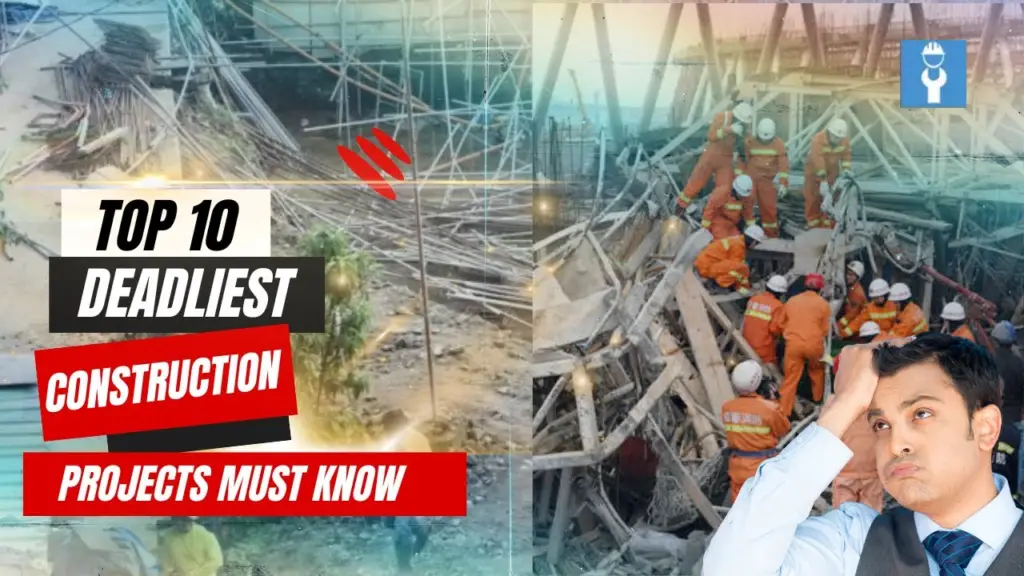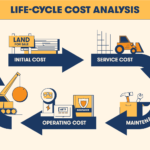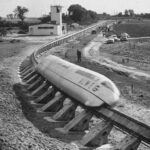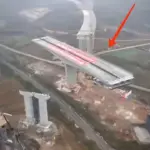In our today’s article we’ll delve into the world’s deadliest construction projects because, for some reason, when disasters happen and lives are lost, it matters to know the cause and avoid such a mishap.
Featuring a fatality rate of 408 deaths per thousand workers, the Panama Canal stands in a league of its own, with nearly 31,000 lives lost during its construction.
However, when compared to other projects like the Suez Canal, which had a much larger workforce, the absolute number of deaths seems relatively smaller.
Historically, safety often took a back seat to speed and profit in the construction industry.
However, forward-thinking engineers and construction companies began to take worker safety seriously as early as the 1800s. It’s baffling to think that worker lives were seemingly disposable from the beginning.
For example, during the construction of the Eiffel Tower in the 1880s and 1890s, official records indicate no construction-related deaths, largely attributed to pioneering safety measures like safety nets and guardrails.
Similarly, when the 984-foot Art Deco Chrysler Building was built in New York in the 1920s and 30s, none of its 3,000 workers died. Despite significant advancements in safety over the years, construction remains a dangerous profession, with workers still facing risks like falling debris, collapsing cranes, asphyxiation, and inadequate safety equipment.
Thankfully, in the developed world, the days of casualties caused by malaria, malnourishment, hostile natives, and predatory animals like leopards, lions, and tigers are long gone.
Like Us on Facebook!
Let’s now explore some of the world’s deadliest construction projects.
Subscribe Us on YouTube!

The Suez Canal,
The Suez Canal, a man-made channel connecting Egypt’s Suez Isthmus between Africa and Asia, stretches over 120 miles, carrying more than 90 vessels per day on average, totaling 32,000 per year.
This critical waterway facilitates direct routes for commercial and military ships between the Indian Ocean, the Red Sea, and the Mediterranean. It significantly shortens travel distances between ports in the Middle East, Africa, Asia, and Europe, cutting as much as 5,500 miles off voyages.
The colossal project employed nearly 1.5 million workers from around the world and claimed the lives of over 120,000 souls, making it one of the deadliest construction projects in history.
When construction began in 1859, much of the excavation work was done manually by laborers wielding pickaxes and shovels. Progress was slow due to dense bedrock, malaria outbreaks, labor disputes, lack of adequate food and water, harsh weather, and deplorable living conditions.
It was only when forced labor was banned in 1863 that mechanized construction, employing steam and coal-powered earth movers, picked up the pace. The canal opened in October 1869, with a single lane, 25 feet deep at its lowest point, and without locks.
Although the final cost of the project was nearly $100 million, which may sound like a bargain, adjusting for inflation, it could be equivalent to seven to ten billion dollars today.
Burma-Siam Railway
The construction of the Burma-Siam Railway, connecting Bangkok, Thailand, and Moulmein, Myanmar, claimed the lives of over 30,000 civilians and prisoners of war in the early stages of the Pacific War.
Japanese forces captured thousands of civilians and soldiers from various nations, including Britain, the Netherlands, Australia, and the United States, during the conflict.
These prisoners were subjected to horrific conditions, including forced labor, malnutrition, exposure, and harsh treatment. Over 12,000 Allied POWs are believed to have died during the construction of this railway.
White Sea-Baltic Sea Canal
In the Soviet Union, the construction of the White Sea-Baltic Sea Canal began in 1931 after being repeatedly postponed due to funding issues. The project aimed to reduce transit times and shipping costs between Russia, Finland, and the Baltic countries.
However, most of the labor for the canal was provided by forced labor from the Gulags, and conditions were appalling. Official records indicate that between 12,000 and 25,000 workers died from exposure, starvation, malnutrition, and exhaustion. Unofficial sources suggest that the real death toll might have been up to ten times higher.
The Karakoram Highway
The Karakoram Highway (KKH), also known as the China-Pakistan Friendship Highway, is a challenging construction project that stretches nearly 800 miles from Pakistan’s Punjab province to China’s Xinjiang region. It passes through some of the world’s most rugged and remote landscapes, often only hours away from neighboring nations like Tajikistan and Afghanistan.
The KKH, which began construction in 1959, was a collaborative effort between China and Pakistan. It involved overcoming numerous challenges, including harsh weather conditions, earthquakes, landslides, and high-altitude work environments. The construction site was dangerous, and estimates of construction-related deaths vary, with some sources suggesting a much higher death toll than officially reported.
Transcontinental Railroad
Finally, the Transcontinental Railroad in the United States was built at an unprecedented pace between 1863 and 1869, with an official fatality rate of 80 deaths per thousand workers.
This remarkable project involved the construction of nearly 1,100 miles of track, linking the east and west coasts of the country. It employed around 15,000 Chinese and as many as 2,000 Irish immigrants, who mainly used hand tools, black powder, and dynamite to move millions of tons of rock. The project was known for its speed and cost-efficiency, even if it sacrificed some safety and quality aspects.
The bottom Line
These construction projects reveal the perilous and often deadly conditions faced by workers in various parts of the world. While safety measures have improved over the years, the history of construction is filled with examples of workers who endured significant risks and challenges while building these incredible projects.
It’s important to remember the sacrifices made by those who contributed to these constructions and to continue improving workplace safety in the construction industry. Thank you for watching this informative episode.



















